In a world where nearly everyone is granted some form of superpower, referred to as a “quirk”, the dream job of “hero” has arisen to keep the peace. Aspiring heroes have one place in mind to learn; UA Academy. One quirkless child, Izuku Midoriya, has always dreamed of becoming a hero, and with some luck and determination, was able to obtain a quirk and start on his journey.
“My Hero Academia” is one of the top-airing shounen around, and “My Hero: One’s Justice” attempts to bring some of the glamour of the show into a fighting game format. With a large fanbase to please and intense legacy to uphold, One’s Justice has a lot of expectations in its release.
Modes

One’s Justice has a variety of different playable modes, many of which are standard fair in a fighting game. There’s a story mode, local and online battle modes, a training mode, an arcade mode, and a mission mode. Each mode provides a different appeal.
Story Mode
The story mode of One’s Justice follows the plot of the second half of the second season of the show all the way to the midway point of the third season. The protagonist, Midoriya, has started his internship with pro-hero Gran Torino, and encounters many villains that lead to the decisive battle between All Might and All for One. It’s an awkward place for those unfamiliar with the show to start; much of the characterization and stakes are lost. Similarly, not much is new for returning fans. Events play out in the same way, dialogue is nearly unchanged, and screen grabs are pulled directly from the anime itself. There’s nothing new for an old fan to discover and enjoy — just a retelling of what they’ve already seen.
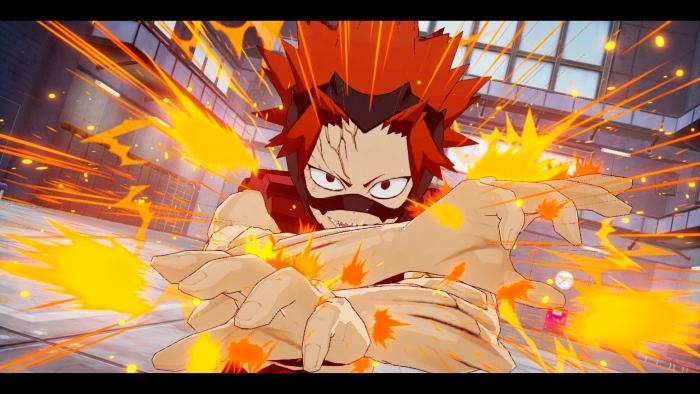
What the story mode does best is at training the player. Tutorials are neatly woven into the story, and explains the game’s fighting mechanics quite neatly. This also seems to be one of the only pros of picking this spot in the story to start, as the Internship arc has many training moments that work well as tutorials without seeming shoe-horned in.
Local Battle Mode
The PvP battle modes are the staples of fighting games. One’s Justice is a 3D Arena type fighting game, limited to one on one matches between either two players or one player against a CPU. As far as attacks go, it’s simple to understand after a few attempts. The attacks follow a rock-paper-scissors pattern, with three attacks that are all weak to one type and strong to the other. A few other moves, such as dashing and a few aerials, provide a bit of mix-up to this basic formula, but not enough to be too complicated to the more casual players.
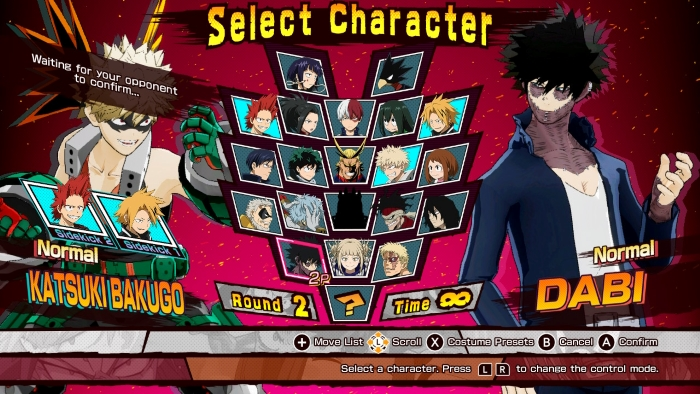
Most characters are unlocked from the start, with a few others like All for One and Endeavor being locked either behind the Story Mode or DLC. The highlight of this game is the different characters; for fans of the show, each character plays how you expect. The quirks are shown off well, with fighting styles matching up with the anime. A few changes are done to keep the playable characters even in different matchups even if it diverges from canon, but this is only necessary and helps fans of the characters be able to win with their favorites. The only issue is that while many are represented, not all of the recognizable cast in playable, so some fans will be left out when it comes to playing as their favorite.
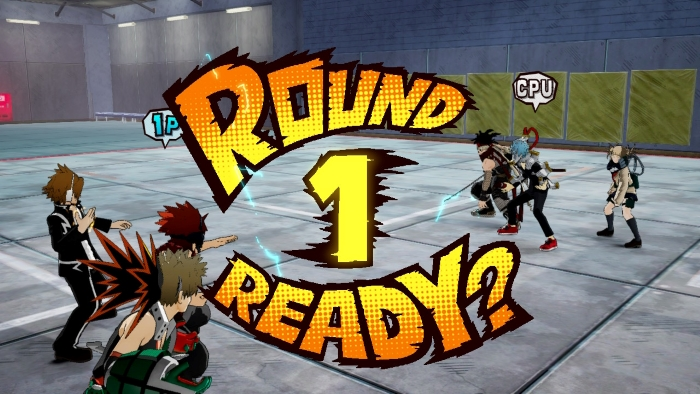
A highlight of the battle mode is the various 3D arenas. Each one has some type of interactive environment, whether it be breaking walls or pillars, that changes the battle in various ways as rounds go on. It also helps make the battles immersive, as players can see their attacks change the stage in realistic ways. This unexpectedly becomes one of the most interesting parts of these battles, as gameplay can drastically change as barriers are destroyed and the world adapts to the fight.
Online Battle Mode
The online battle mode is similar fare to the local counterpart. The online lobby is split into a ranked and unranked mode, where ranked keeps tracks of wins and losses through points. The online lobby suffers similar issues to other Switch fighting games, where lagging can become an issue despite a stable internet connection. With the large, stylized movesets each character has, this isn’t to be unexpected, but the internet issues are not too common to be game-breaking.
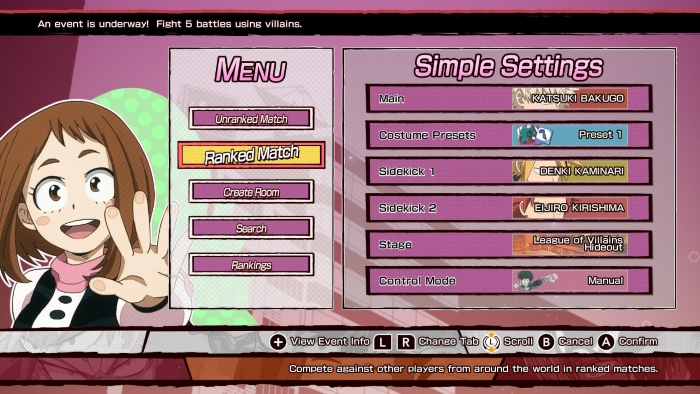
The online mode is also where customization in the game shines. In different areas of the game, you can unlock various customizable settings, ranging from outfits to put each character to player cards to identify yourself in online modes. Many of these changes are homages to the show — some reference All Might, others reference Mineta, and some are specific to individual playable characters. These options help to spice up online mode, allowing players to see different looks on the same character and can help differentiate between two players of the same character.
Training Mode
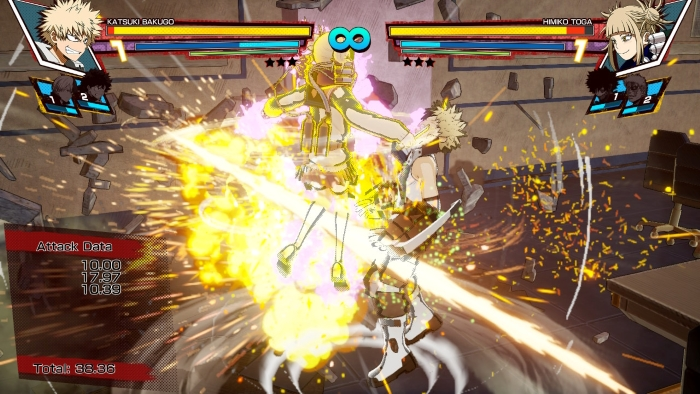
Training mode is another standard fare of fighting games. One’s Justice’s training mode allows players to test different characters against others, getting used to a variety of different playstyles. The usual health meter is available to see how different attacks and combos play out, and there’s a box in the corner that gives data on attacks. It’s a useful mode for players who want to get more into the game, but it doesn’t allow for repeated teching of certain moves and combos, and the CPU can throw dents in what you are trying to practice. With these issues, it falls short of other similar training modes in other fighting games.
Arcade Mode
Arcade mode is another single-player option. It puts the player through a series of battles with increasing difficulty. It’s fairly simple and well-executed, and serves as a great way to practice a certain character over and over in different matchups. The straightforwardness of this mode is its strength, and it serves its purpose of a fun challenge mode quite well.
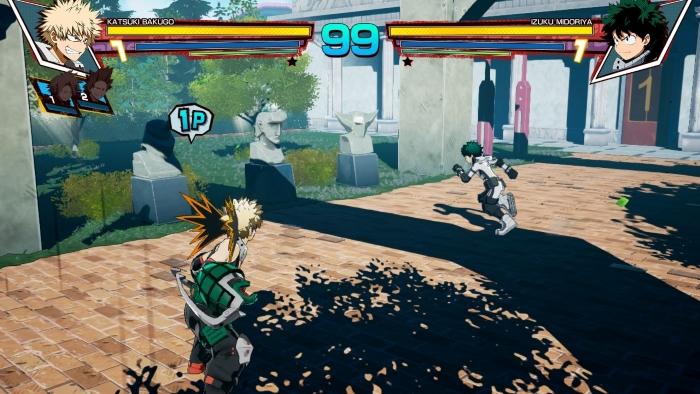
Mission Mode
The last mode is Mission Mode, and it acts as the main counterpart to the Story Mode in terms of single-player content. Mission mode gives the player a variety of battles to fight on different maps. There are 6 maps in total, with different pathways leading to different matchups. Players are limited to the three characters they pick at the start for the entirety of the map, and conditions such as health carrying over are placed on the characters. It’s a fun challenge mode, but doesn’t add much besides that. This would have been a neat place to add mini game-only stories and content for My Hero fans, and without any mini-story, it feels all too similar to arcade mode with just being an additional challenge for players to undertake.
Graphics and Soundtrack
The graphics for the game are solid. Menus take inspiration from the anime’s art style, giving fans a treat. The 3d models do a decent job of transforming the characters. Most importantly, the various moves of characters are well-translated into 3d movesets, and look both visually interesting and recognizable.
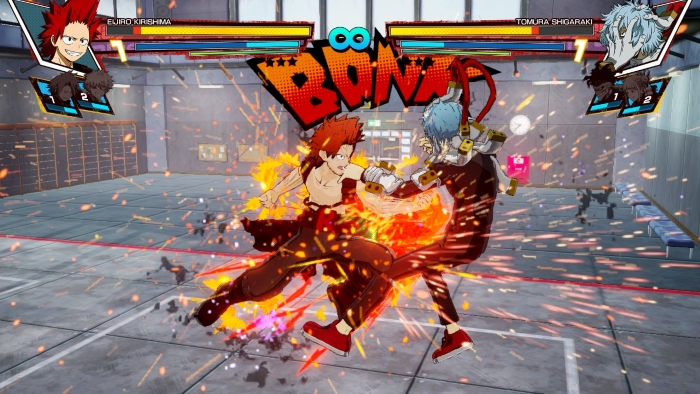
On the flipside, the soundtrack is really lacking. Fans of the show will notice a lack of OSTs from the show itself, instead replaced with bland, generic sounding electronic beats. With the variety of good music attached to the My Hero IP, it’s a shame that some of the iconic tracks of the series couldn’t be more prominent in this game, and with nothing coming close to replace them, it becomes a letdown. The redeeming factor of the soundtrack and noise comes from the original Japanese voice actors who are present, but it doesn’t make up for the lack of fighting tunes to dig into.
Overview
My Hero: One’s Justice had a lot to live up to. The IP has only gained more and more popularity, and a video game adaption seems only natural. However, there are many hangups that prevent One’s Justice from feeling like a necessary purchase for fans of the series, and there’s nothing to really compel outside fans to give it a try. It’s generic in its fighting game attributes and disappointing in its My Hero roots. This all leads to a mediocre game that holds some novelty, but not anything more than a fun pick-up for fans.
My Hero: One’s Justice gets a 6.5/10.

